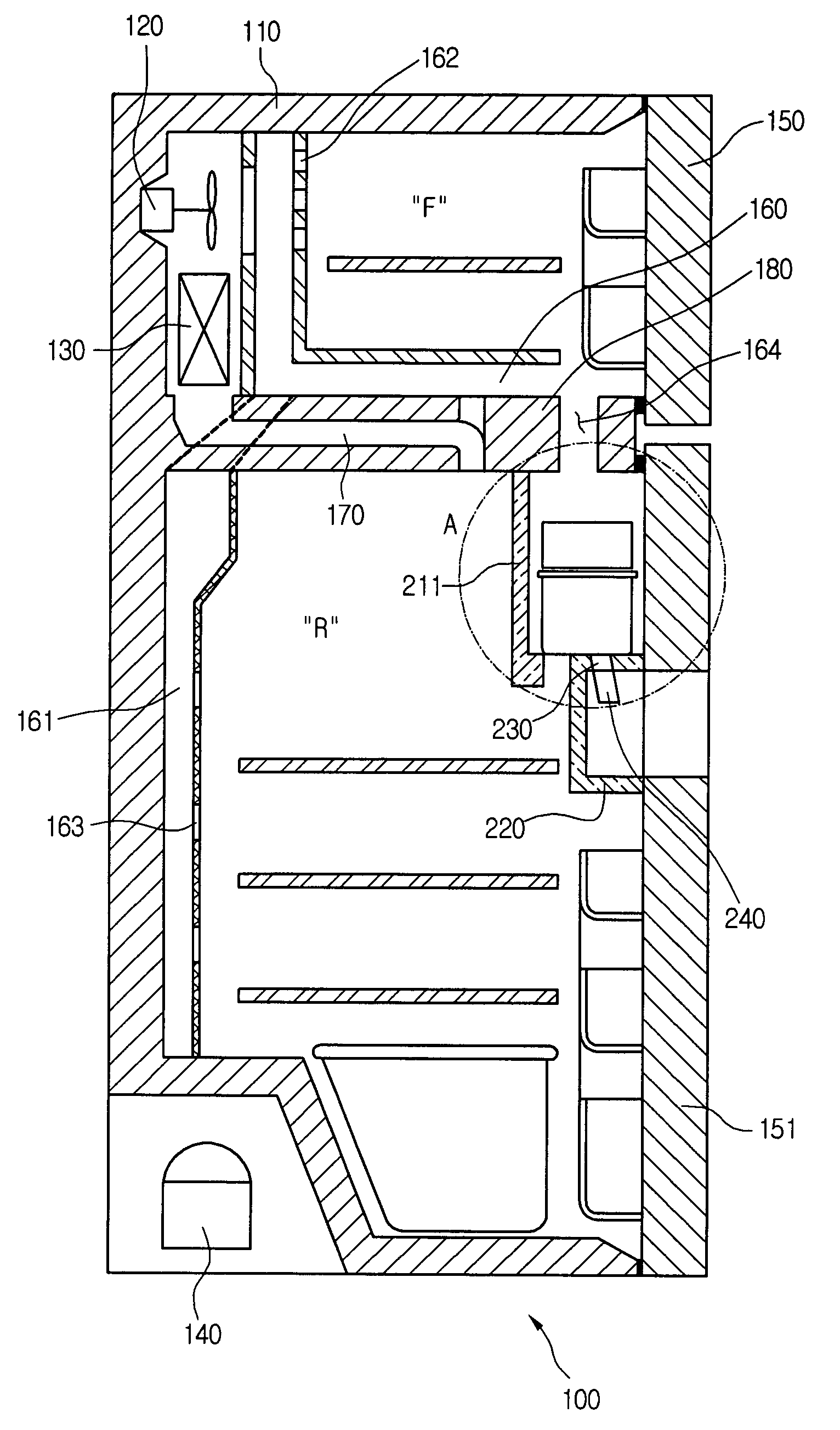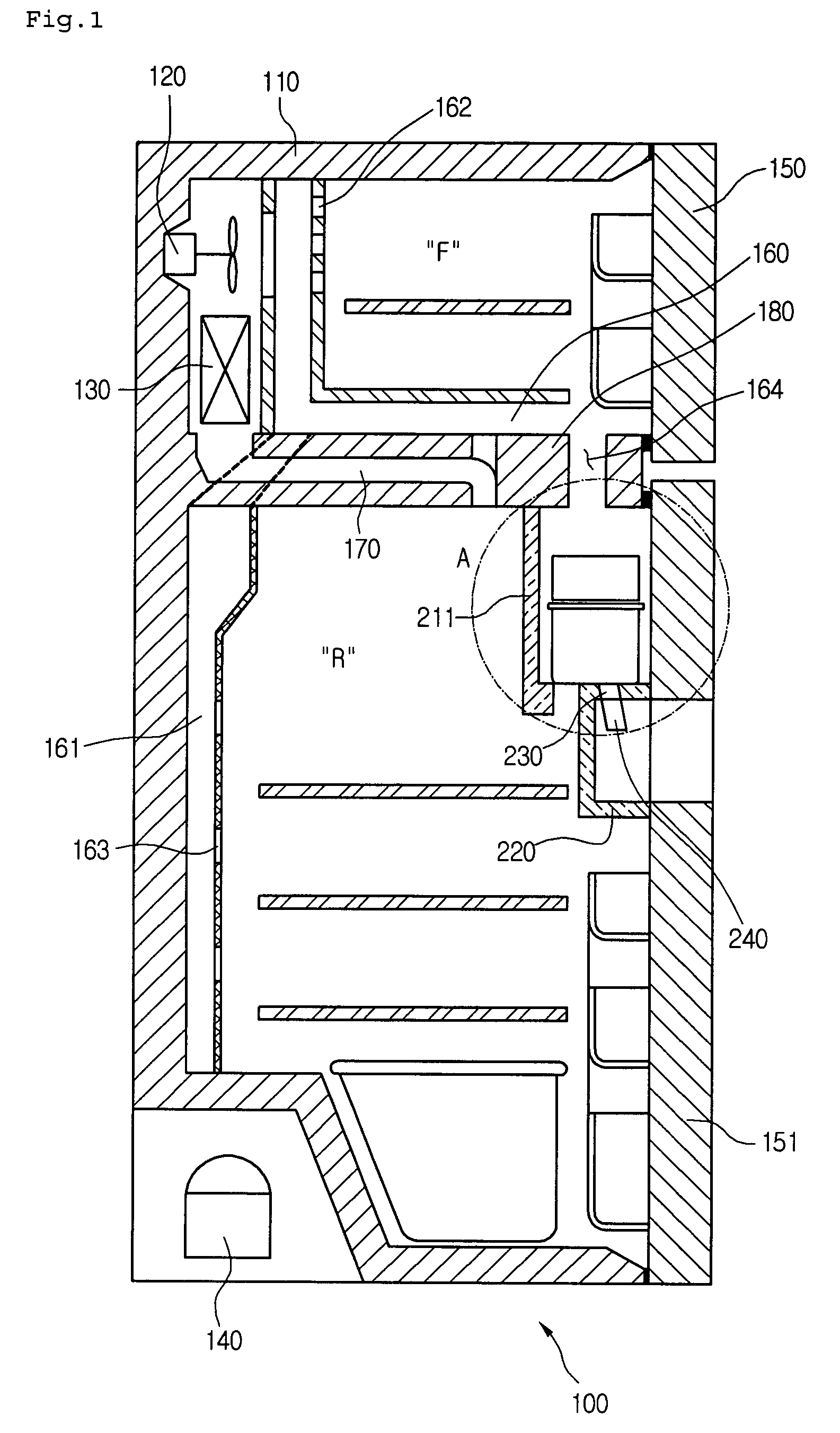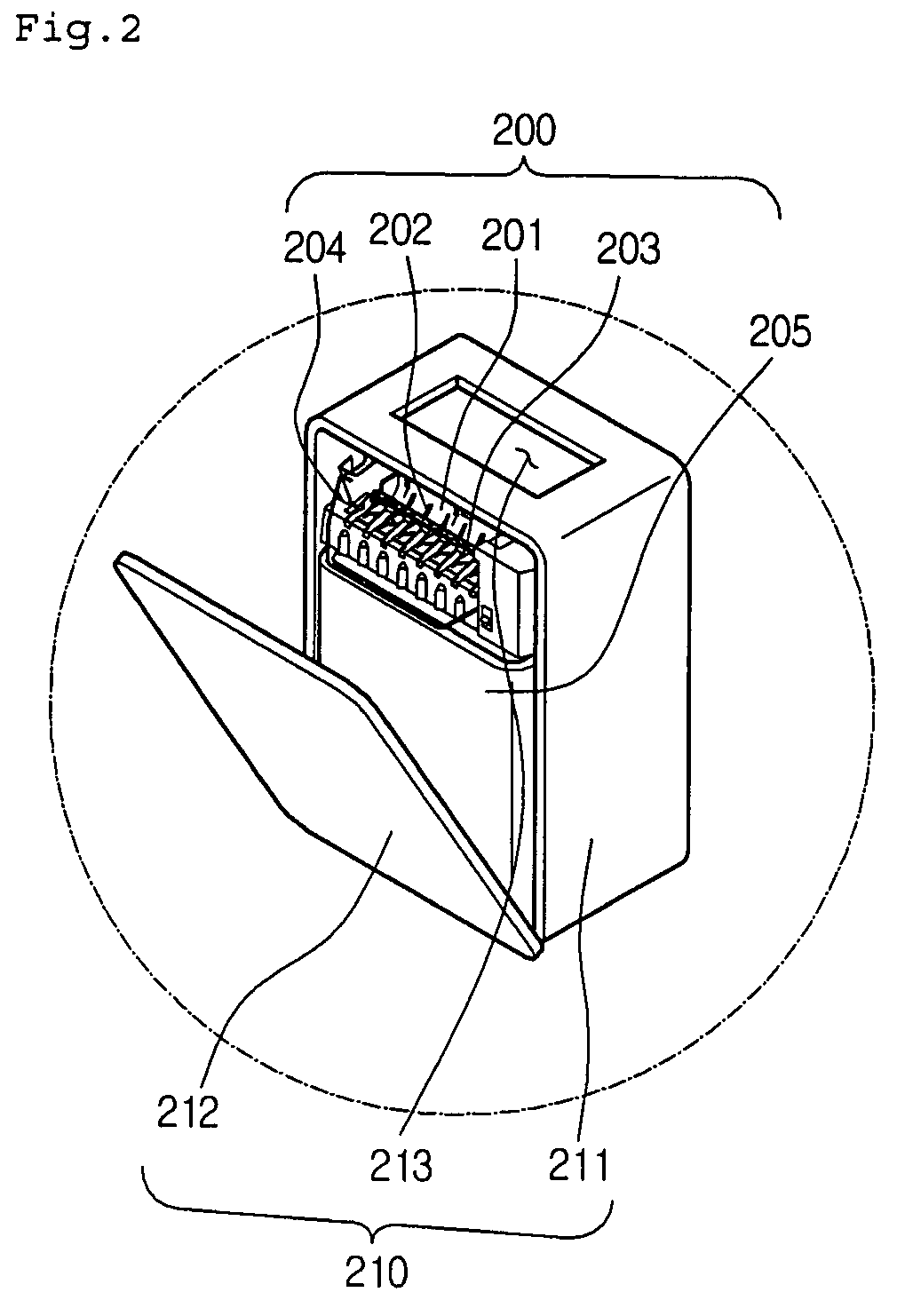Refrigerator
a technology for refrigerators and freezers, applied in the field of refrigerators, can solve the problems of reducing the interior volume of refrigerators and the inconvenient use of ice makers in the freezing chamber of top-mounted refrigerators for short peopl
- Summary
- Abstract
- Description
- Claims
- Application Information
AI Technical Summary
Benefits of technology
Problems solved by technology
Method used
Image
Examples
first embodiment
[0038][First Embodiment]
[0039]FIG. 1 is a sectional view showing an air circulation structure of a refrigerator according to a first embodiment of the present invention, and FIG. 2 is an enlarged perspective view of an ice machine depicted at portion “A” in FIG. 1.
[0040]Referring to FIGS. 1 and 2, a refrigerator 100 includes a refrigerator body 110, a freezing chamber door 150, a chilling chamber door 151, a blower fan 120, an evaporator 130, a freezing air duct 160, and a chilling air duct 161. The refrigerator body 110 forms the exterior wall and the frame of the refrigerator 100. The freezing chamber door 150 is hinged to a front upper portion of the refrigerator body 110 for opening and closing a freezing chamber (F), and the chilling chamber door 151 is hinged to a front lower portion of the refrigerator body 110 for opening and closing a chilling chamber (R). The blower fan 120 is installed at a rear portion of the refrigerator body 110 to blow a cold air to the freezing chamb...
second embodiment
[0054][Second Embodiment]
[0055]FIG. 4 is a sectional view showing an air circulation structure of a refrigerator according to a second embodiment of the present invention, and FIG. 5 is a sectional view showing an air circulation in the refrigerator depicted in FIG. 4.
[0056]Referring to FIGS. 4 and 5, a refrigerator 100 includes a freezing air duct 160, a chilling air duct 161, an inlet duct 165, an outlet duct 166, and a cold air return duct 170. A cold air blown by a blower fan 120 passes along the freezing air duct 160. The chilling air duct 161 is branched off from the freezing air duct 160 and connected to a chilling chamber (R). The inlet duct 165 is formed through a barrier 180 to connect an end of the freezing air duct 160 to an ice-making chamber 210 (refer to FIG. 2). The outlet duct 166 is formed through the barrier 180 in a vertical direction to allow a cold air circulated in the ice-making chamber 210 to enter a freezing chamber (F). The cold air return duct 170 is form...
third embodiment
[0061][Third Embodiment]
[0062]FIG. 6 is a perspective view showing an air circulation structure of a refrigerator according to a third embodiment of the present invention, and FIG. 7 is a sectional view showing an air circulation in the refrigerator depicted in FIG. 6.
[0063]Referring to FIGS. 6 and 7, a refrigerator 100 includes a barrier 180, a freezing air duct 260, a cold air return duct 270, and a chilling air duct 161. The barrier 180 divides the inner space of the refrigerator 100 into upper and lower chambers, a freezing chamber (F) and a chilling chamber (R). The freezing air duct 260 is extended through the barrier 180 and connected to a top of an insulating case 211 of an ice-making chamber 210 (refer to FIG. 2). The cold air return duct 270 is formed through the barrier 180 to allow a cold air in the ice-making chamber 210 to go back to an evaporator 130. The chilling air duct 161 allows a cold air blown by a blower fan 120 to flow toward the chilling chamber (R).
[0064]Th...
PUM
 Login to View More
Login to View More Abstract
Description
Claims
Application Information
 Login to View More
Login to View More - R&D
- Intellectual Property
- Life Sciences
- Materials
- Tech Scout
- Unparalleled Data Quality
- Higher Quality Content
- 60% Fewer Hallucinations
Browse by: Latest US Patents, China's latest patents, Technical Efficacy Thesaurus, Application Domain, Technology Topic, Popular Technical Reports.
© 2025 PatSnap. All rights reserved.Legal|Privacy policy|Modern Slavery Act Transparency Statement|Sitemap|About US| Contact US: help@patsnap.com



